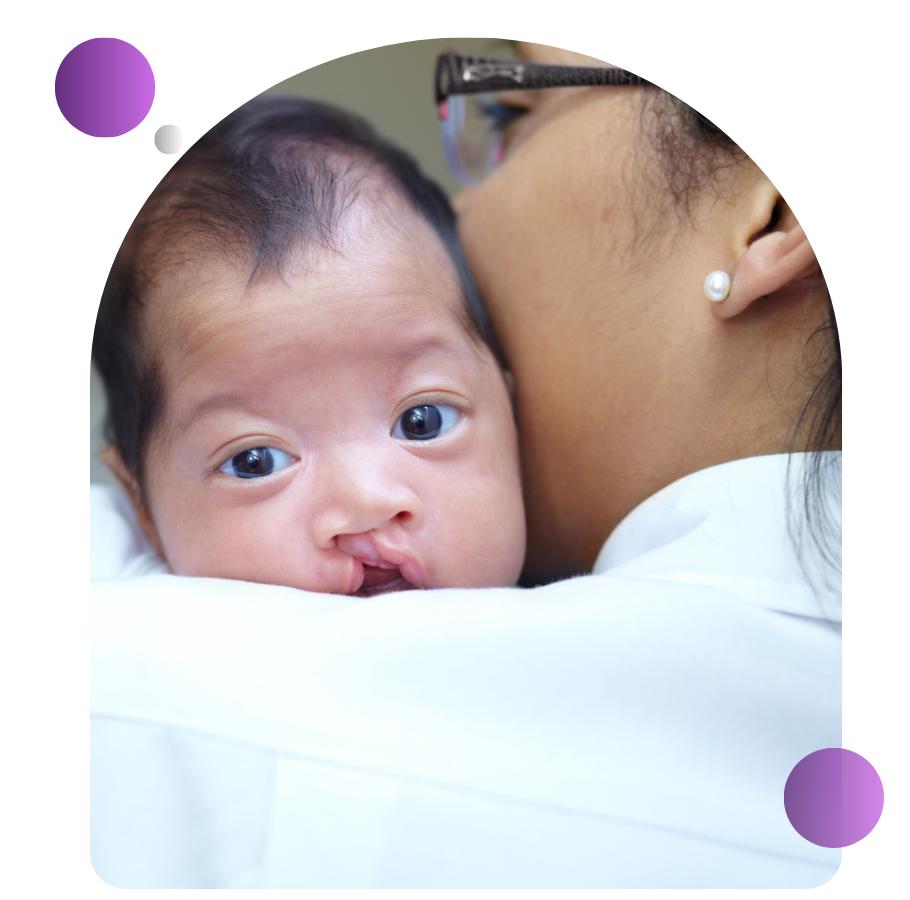

Cleft Lip and Palate
Cleft Lip and Palate
Strong Starts: Learning About Cleft Lip & Palate
Cleft lip and palate are congenital conditions where there is an opening or gap in the upper lip or the roof of the mouth (palate). These conditions can affect feeding, speech, hearing, and dental development. They may occur together or independently, and early intervention through surgical procedures and therapies can help improve quality of life.

How Therapy Helps:
Therapies like speech therapy, feeding therapy, and dental care play an essential role in supporting children with cleft lip and palate:
Speech therapy focuses on improving speech clarity and developing normal speech patterns.
Feeding therapy helps with feeding difficulties, particularly during the infant years, and supports optimal oral muscle development.
Dental and orthodontic care is often necessary to correct dental problems that arise due to clefts.
Caring for Your Child with Cleft: Parent Tips & Support

What Research Says
- Surgical outcomes depend on timing:
Studies suggest that performing surgery to repair clefts at an early age improvesspeech development and overall facial appearance, leading to better social integration (Cleft Palate-Craniofacial Journal, 2016). Early intervention improves speech outcomes:
Research consistently shows that early speech therapy and feeding therapy can significantly improve speech and feeding skills in children with cleft lip and palate (Journal of Craniofacial Surgery, 2014).- Multidisciplinary care is essential:
Research supports that ateam approach, including surgeons, speech therapists, dentists, and orthodontists, is the most effective method for treating cleft lip and palate and supporting the child’s development (International Journal of Pediatric Otorhinolaryngology, 2017).
Cleft Lip & Palate FAQs: What Parents Ask Most
- Therapy supports speech, feeding, and oral development. Speech therapy helps children develop clearer speech, while feeding therapy addresses early feeding challenges. Dental and orthodontic care is also key for managing any dental issues related to the cleft.
It's important to begin speech therapy as early as possible, ideally around the time of surgery or soon after. Early intervention helps prevent speech delays and encourages proper language development.
Most children with cleft lip and palate require surgical intervention to repair the gap in the lip or palate. Surgery is typically performed in stages, starting in infancy, and may be followed by additional surgeries as your child grows.
Children with cleft lip and palate need regular follow-ups with a multidisciplinary team. This includes visits to a surgeon, speech therapist, dentist, and orthodontist to monitor their progress and ensure optimal development.
Support your child by helping them build confidence in their appearance and ability to communicate. It’s also important to address any social or emotional challenges they may face due to their condition.
